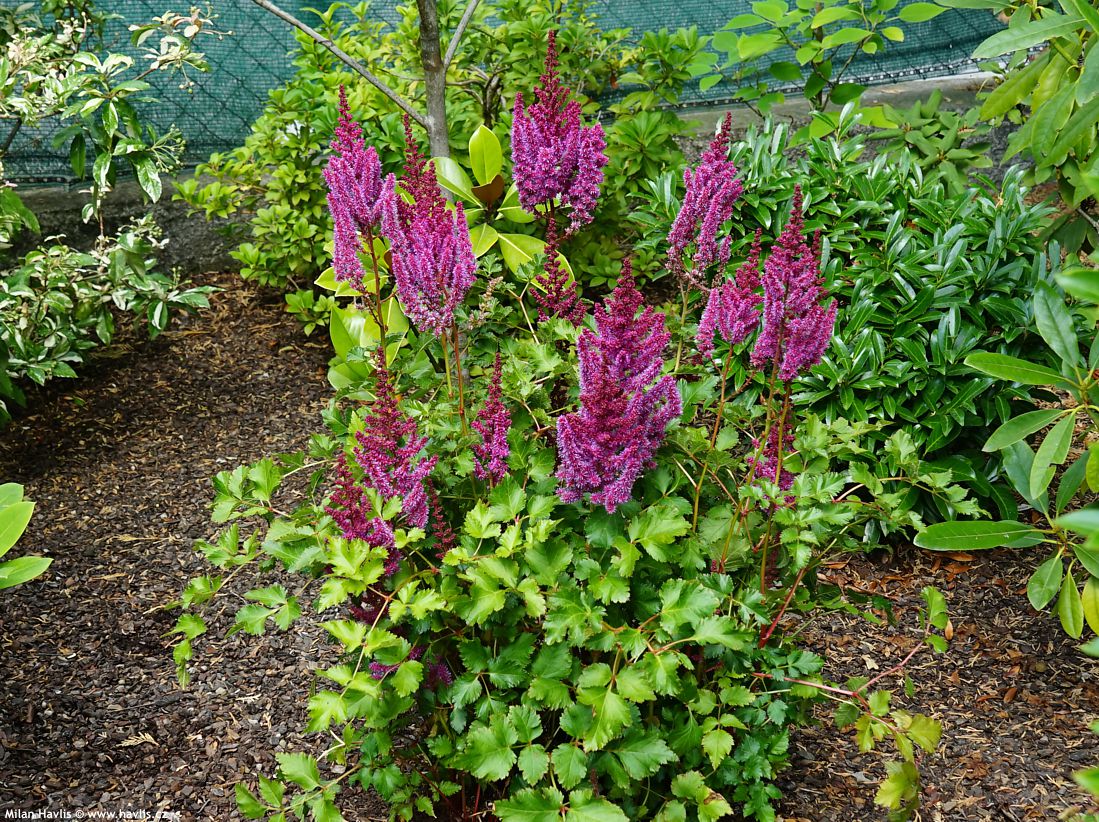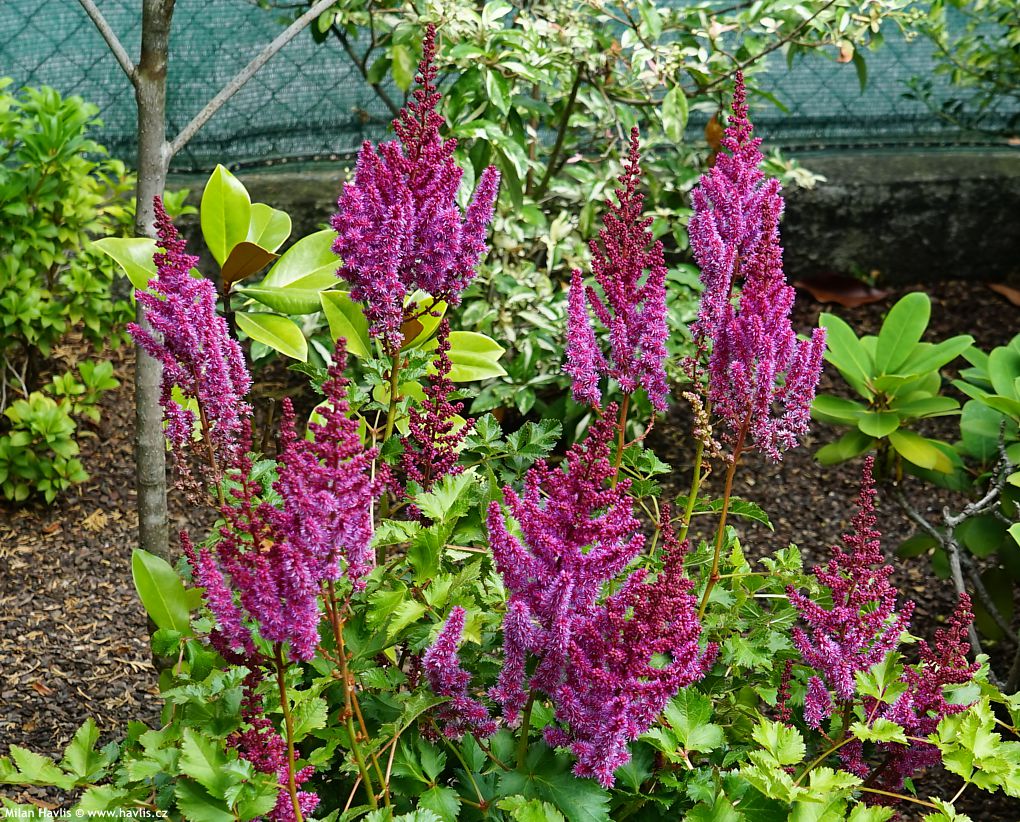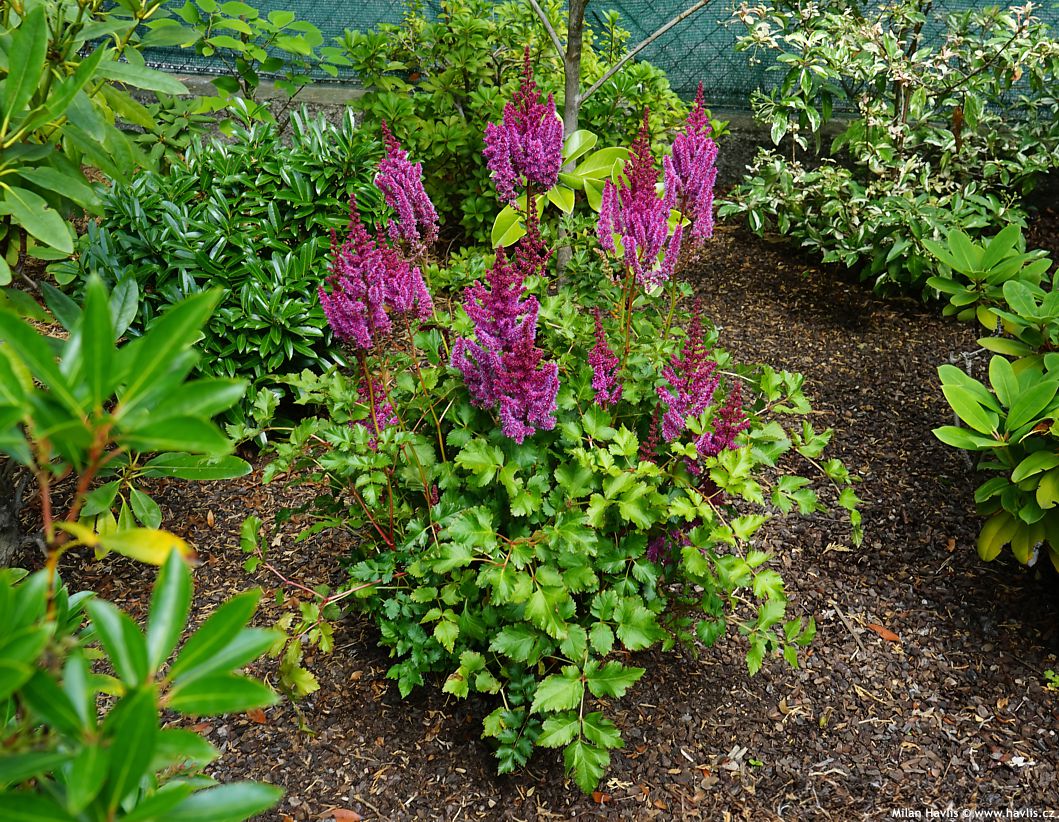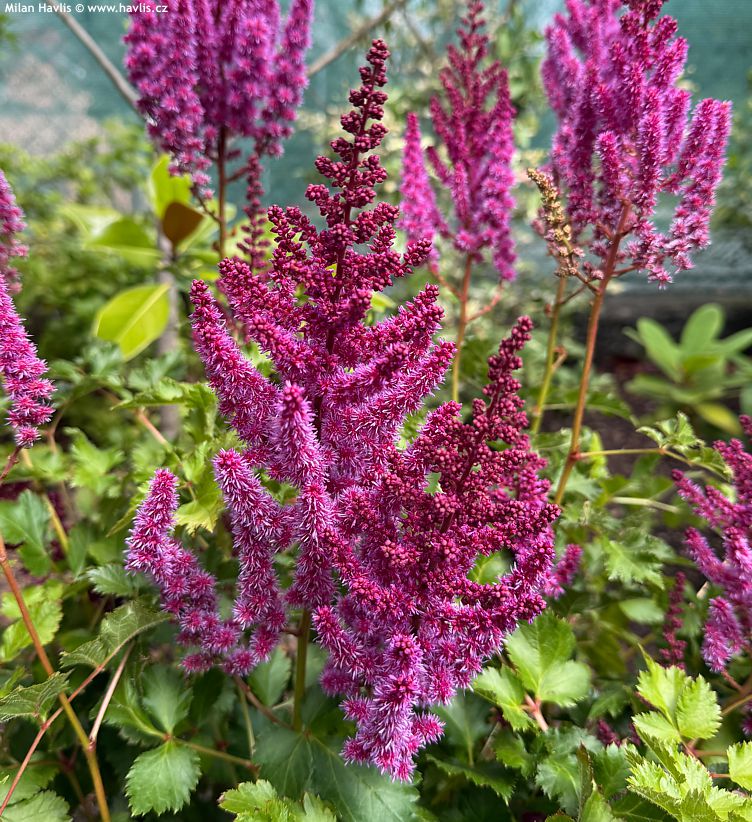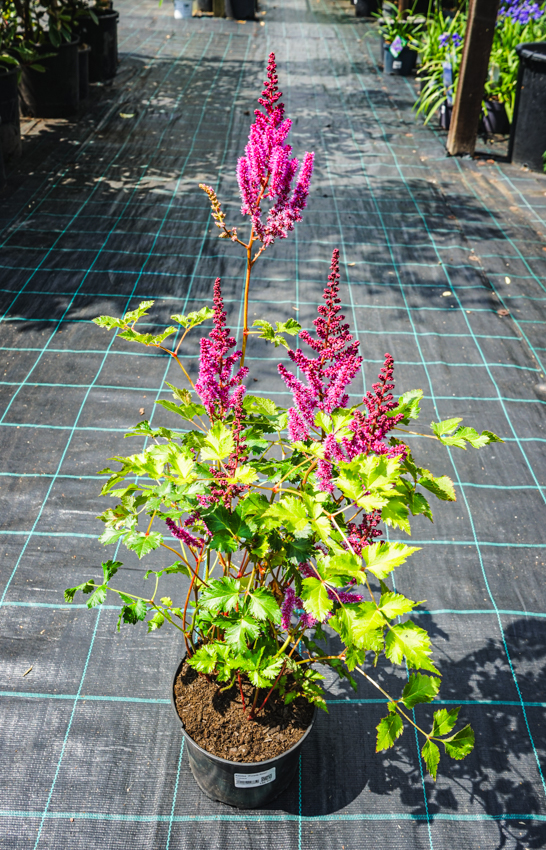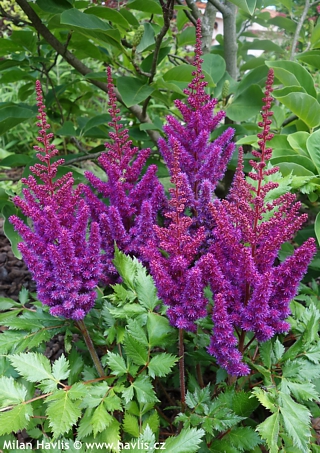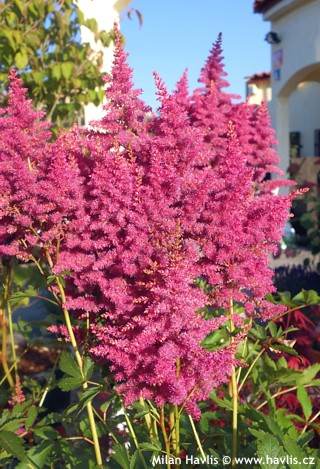Astilbe chinensis 'PURPLE RAIN' Chinese false spiraea
Astilbe
The genus Astilbe comprises about 18 species of perennial, rhizomatous plants in the saxifrage family (Saxifragaceae), native primarily to East Asia (China, Japan, Korea, the Himalayas) and partly to North America. The first specimens were introduced to Europe in the 19th century, for example from Japan by Dutch botanist Philipp Franz von Siebold (1796–1866). Ever heard of him? A rare and beautiful summer-flowering magnolia, Magnolia sieboldii, was named in his honour.
A special position within the genus Astilbe is held by Astilbe chinensis, first described in 1859 by Russian botanist C.J. Maximowicz based on collections made by R.O. Maack in the region of today's Amur Oblast. In the wild, it inhabits mountainous areas of eastern China, Korea, and Japan—found along shaded streams as well as in sunlit sites within moist deciduous forests at elevations between 400 and 3600 meters. It is distinguished by its coarser foliage texture, rust-hairy, sturdy stems, and—above all—its greater tolerance to direct sunlight and dry conditions compared to other Astilbe species.
Purple Rain is a little taller cultivar of Chinese false spiraea, growing to around 60 cm with a compact, upright habit. Its slender, conical flower plumes appear in summer in a vivid, unmistakable shade of magenta-purple, rising above dark green, glossy leaves with delicately serrated margins. The cultivar was bred in the Netherlands by Hans van der Meer, who selected it for its abundant flowering, structural stability, ornamental foliage, and sun tolerance.
Try pairing it in a moist garden bed alongside large-leaved hostas, variegated heucheras, and dark-leaved ligularias, whose robust foliage offers a striking contrast to astilbe’s finely textured leaves. To extend the bed’s seasonal interest, add spring-blooming perennials such as brunneras and pulmonarias. They attract attention early in the season and then gracefully yield the spotlight to Astilbe in midsummer while continuing to enrich the planting with their lower stature and contrasting foliage. Purple Rain is protected by U.S. Plant Patent PP21877 granted in 2011.
If the plant blooms profusely in its first flush and is growing in nutrient-mediocre or even poor soil, the foliage may appear exhausted after flowering. In that case, it's worth cutting the plant back to the ground, feeding with a liquid fertilizer, which will encourage it to regrow; the fresh foliage will remain decorative until the end of the season. Regular feeding also promotes reblooming throughout the summer holidays.
In their natural habitat, astilbes thrive in mountain ravines and damp forests, where they appreciate shade and moist soil. Thanks to their tolerance for both shade and moisture, they have become popular perennials for planting around ponds and in woodland gardens. They are not difficult to grow as long as they have proper conditions: rich, moisture-retentive soil and a preference for partial shade over full sun. However, given regular watering or a naturally damp site, they will also perform well in full sun. Good fertilization enhances both the size and quality of the blooms. Avoid overly alkaline soils and compacted clays that dry out in summer — they are not suitable. For optimal performance, divide and rejuvenate clumps every four years, removing old and dying rhizomes. Do this in early spring before new growth starts. Old foliage and flower stalks should also be cut back in early spring. Fully hardy to approximately –34 °C (USDA zone 4). Perfect for large planters, too.
Last update 21-07-2025
Goods are shipped all over Europe. For Russia and U.K. and for further details please read about SHIPPING OPTIONS HERE.
Are you interested in a serious discount for orders NOV-FEB? Check your options here.
THE PRICES INCLUDE VAT of 15%. For quick conversion you can use 1 CZK = approx. 0.04 EUR
- STANDARD QUALITY - Plants of this group are 1st class quality with number of branches and overall density adequate to their size and age, considering they were container grown.
- DE LUXE QUALITY - This label guarantees a luxurious quality of manually selected plants that, compared to their height and age, are exceptionally dense and beautiful.
- EXTRA - These plants are usually mature and bigger specimens with exceptional overall appearance.
- STANDARD (as described in the plant form) means a tree with a trunk of 190-210 cm and a crown at the top, unless specified differently. The commercial size for trees is their girth measured in the height of 1m from ground.
- HOBBY - These plants are of the same quality as our standard-quality plants but younger and therefore cheaper.
- SHRUB - a woody plant with branches growing bushy from the ground level.
- HALF-STANDARD or MINI-STANDARD - a small tree with shorter trunk, its size is usually specified.
- FEATHERED - These are trees with branches growing already from the base of the trunk and up along the stem.
- GRASSES and PERENNIALS - Sizes given usually read the diameter of the pot or the clump, as specified.



















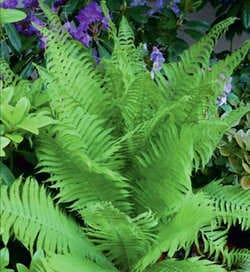




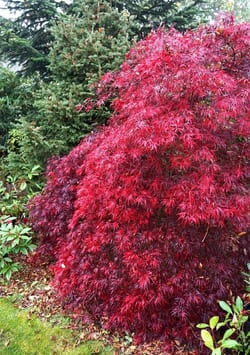
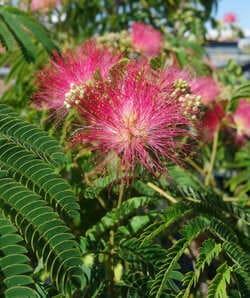
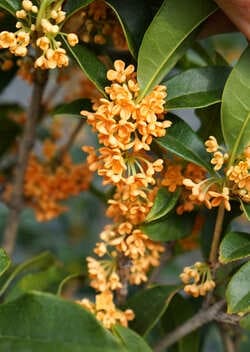



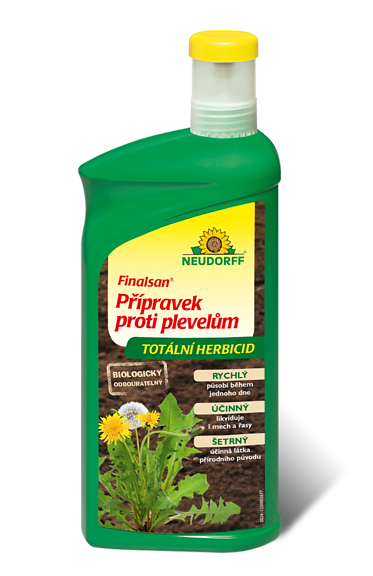


.jpg)
